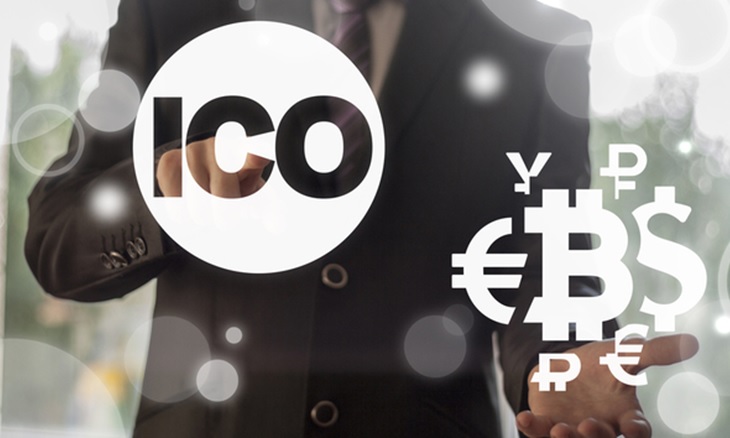The following article was written by Binary.com Founder and CEO Jean-Yves Sireau.

Jean-Yves Sireau, Binary.com
Many firms consider utilizing traditional stock markets and investment banks to produce an Initial Public Offering (IPO) through the sale of stock in order to drive growth and develop an investor base that can benefit by the company’s long-term success. It’s a funding method that’s been around for decades, and provides companies with instant brand and financial market exposure as well as a pool of capital for growth and investment.
The steady and impressive success of blockchain technology over the past few years has spurred numerous firms to look at a new way of financing their goals – the ICO, or Initial Coin Offering.
ICOs Explained
In a traditional IPO, investors are offered company stock, often at an attractive entry price point. After the initial sale, the shares of the firm are traded on a stock exchange such as the London Stock Exchange Group (LSEG) or The New York Stock Exchange (NYSE). These markets pre-date blockchain technologies and are a fundamentally different in many respects.
An ICO, by contrast, involves issuing tokens that function as a type of crowdfunding where a percentage of those tokens are given to the investors in exchange for traditional cash or another well-known currency, such as Bitcoin. Both investors and the issuing company hope to see a steady increase in the value of the newly issued currency, which will represent the return on the investment. Some firms, such as Binary.com, are offering securities-backed tokens that meet the financial and legal definition of “securities” which mean they fall under certain regulatory and disclosure-related frameworks.
ICO vs. IPO – Detailing the Advantages
With an ICO, the cost-per-transaction is miniscule. The fees are practically free when the trades occur between individual investors, ranging from only 0.1 to 0.3 percent when they are traded on one of the centralized cryptocurrency exchanges. Stock trades can be expensive, with brokers charging between $10 to $50 per trade, and sometimes upwards of 1 percent of the purchased stock value is charged as commission. For trading more obscure stocks on an overseas exchange, through local brokers, the costs are considerably higher.
Cryptocurrency also offers around-the-clock access to trading, as individuals can trade at-will when the exchanges never close. The traditional markets are very limited in contrast. For example, the LSEG is only open from 8:00 a.m. to 4:30 p.m. UTC, providing investors with a limited range of time to adjust their holdings. The settlement times with cryptocurrency are also very fast, with transfers settled in minutes while traditional stock exchanges perform settlements in one to two business days. Cryptocurrency’s speed of execution is much more aligned with the mobile-centric investor who expects immediacy and the ability to react quickly. In addition, funding a cryptocurrency account costs very little and can happen fast. Funding a traditional broker account requires a slow and relatively expensive bank transfer.
The transparency of the blockchain also makes it an attractive investment vehicle. The audit trail of blockchain technologies is public and available for everyone to view, which cuts into the change of errors and largely eliminates disputes. When shares are purchased on the NYSE or other markets, there’s no public audit trail that is easily analyzed that would allow investors to look at their transactions.
International Reach and Flexibility
One of the key reasons for the appeal of blockchain technologies is their truly global accessibility, which parallels social media and the broader connectivity offered by the internet. A company launching an ICO will typically take investors from any geographic location, giving them a massive reach for raising funding. This is in contrast to a firm launching an IPO on the LSEG that will mainly pull in investors from the UK.
The cryptocurrency offered by some firms through an ICO are based on a standard protocol and can be listed on various cryptocurrency exchanges without any hassles or related costs. Traditional stocks are listed on a single exchange. Firms don’t list on Japan’s Stock Exchange and then the NASDAQ at the same time.
Looking Deeper at the Risks
This is not to say there aren’t risks with ICOs and some investors will be left with considerable losses. Cryptocurrency exchanges have not yet created rulebooks and codes of conduct for firms that want to offer securities-backed tokens. It’s an unregulated environment.
There are moves to control ICOs, with for example China’s recent ban, which many see as only a temporary move until controls and regulations can be formed. The ban came in response to the reports of fraud within the ICO marketplace and the usage of ICOs investing as a form of money laundering. And some unscrupulous companies have offered ICOs that will prove to be completely worthless, and will develop into financial scandals.
Despite the risks, ICOs are already shifting the funding landscape, as both individuals and big investors see less value for ICOs that are based on in-app tokens, and push towards moving them to the blockchain. Traditional IPOs are typically very large in terms of total dollars and shifting to the blockchain will affect every type of company that’s involved with the complex IPO process.
ICOs are gaining traction because they help firms provide liquidity to shareholders, incentivize management, and raise funds that enable growth and payment of current debt. An ICO also gives a company the opportunity to merge with other firms and signals to the market that they are looking to expand, work with partners and raise their brand profile.
